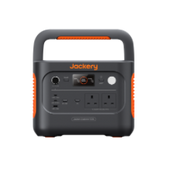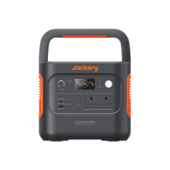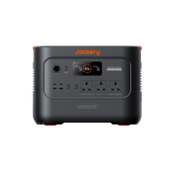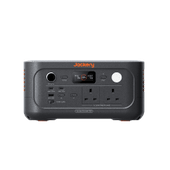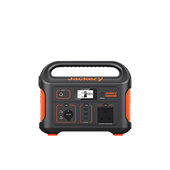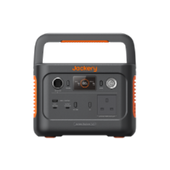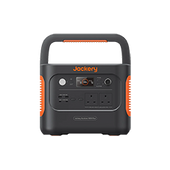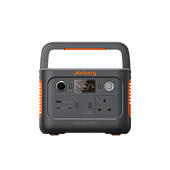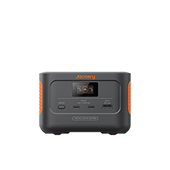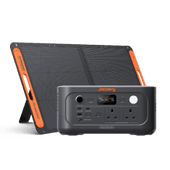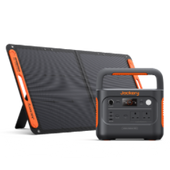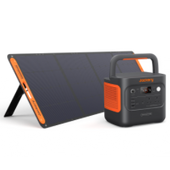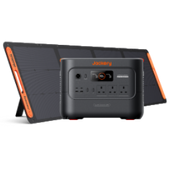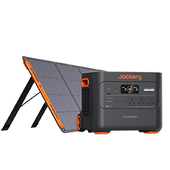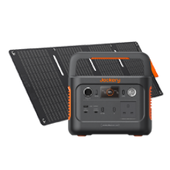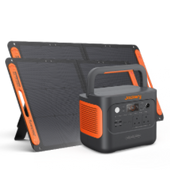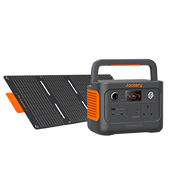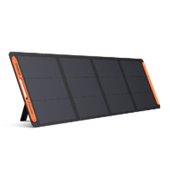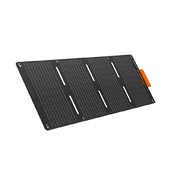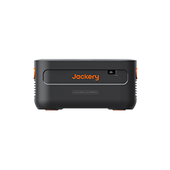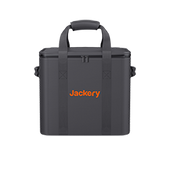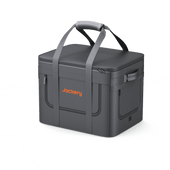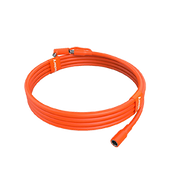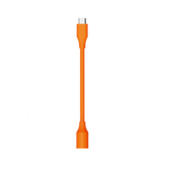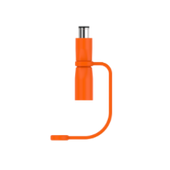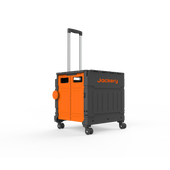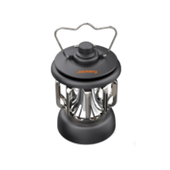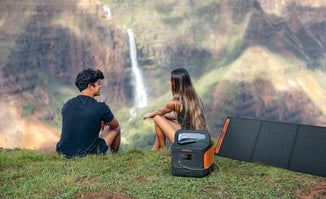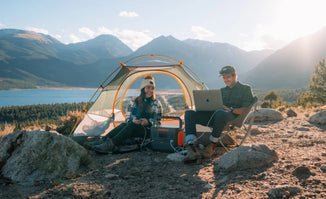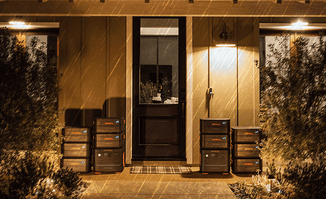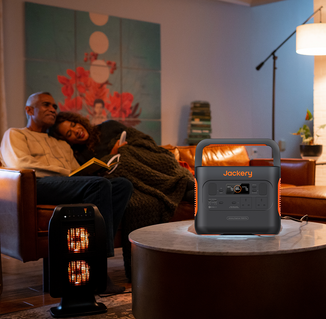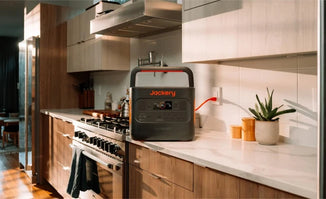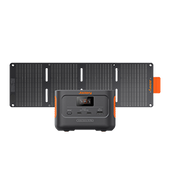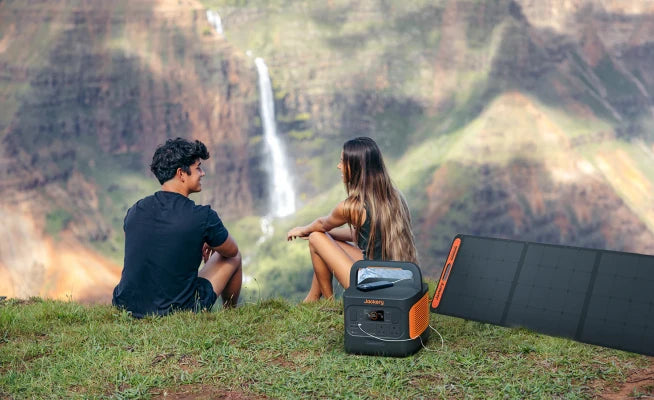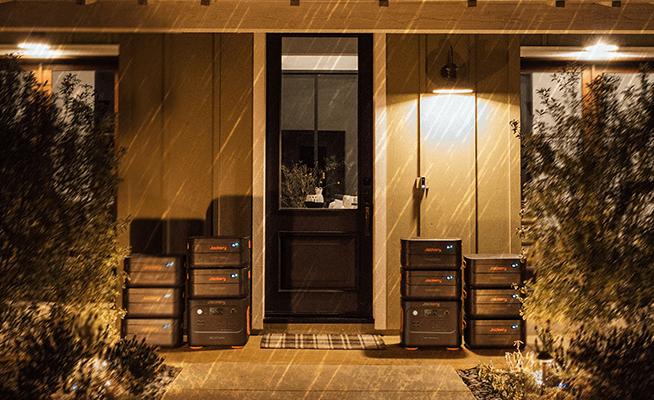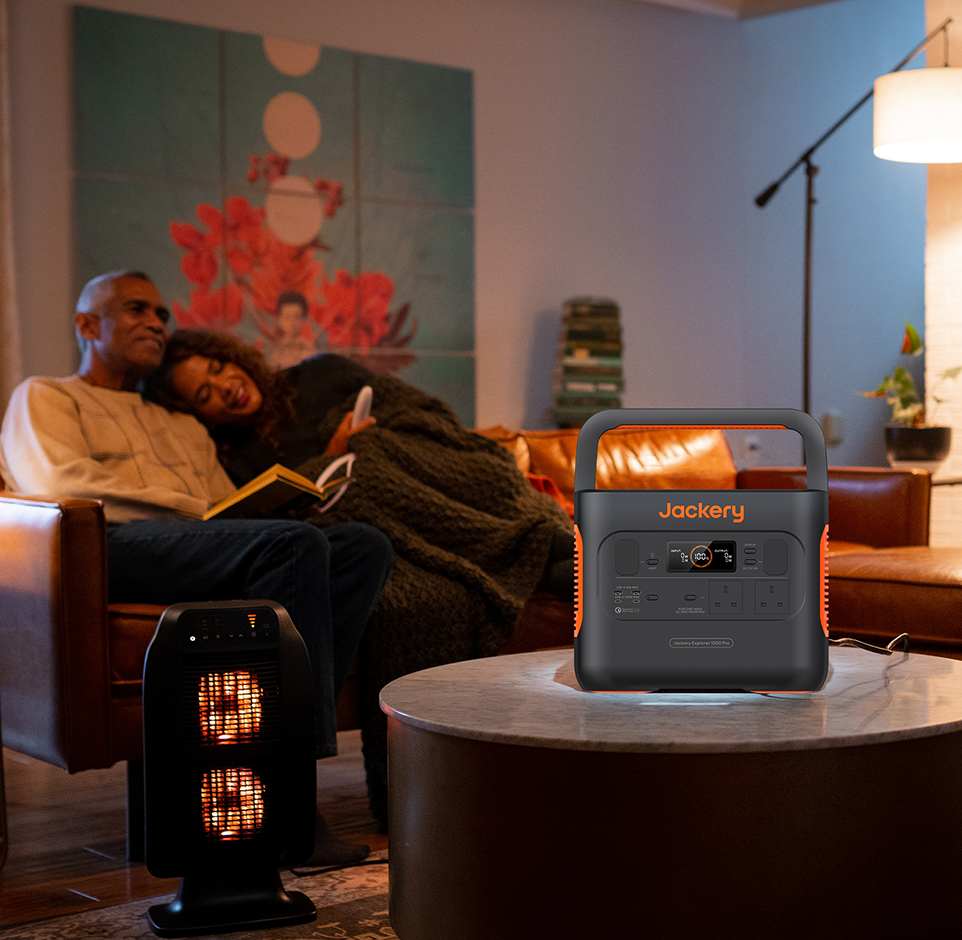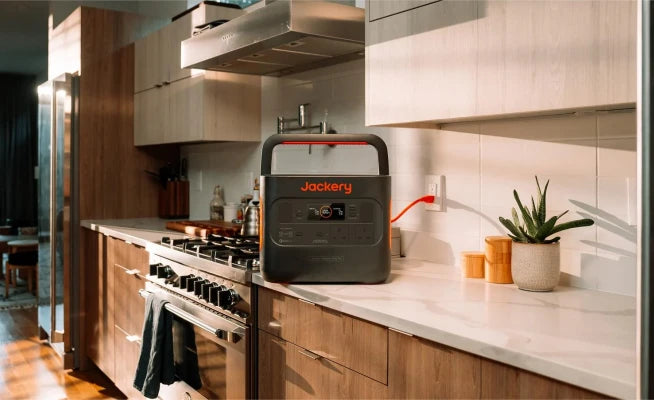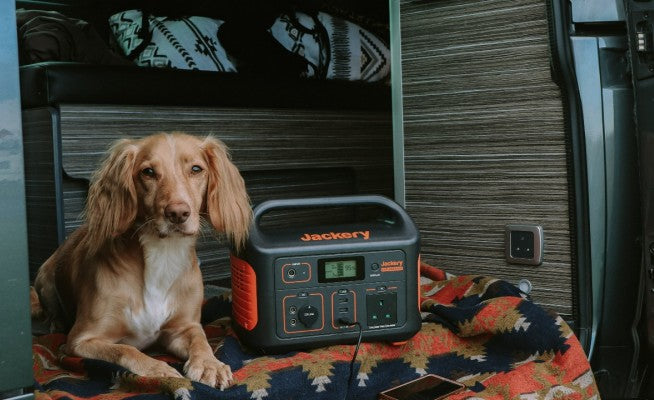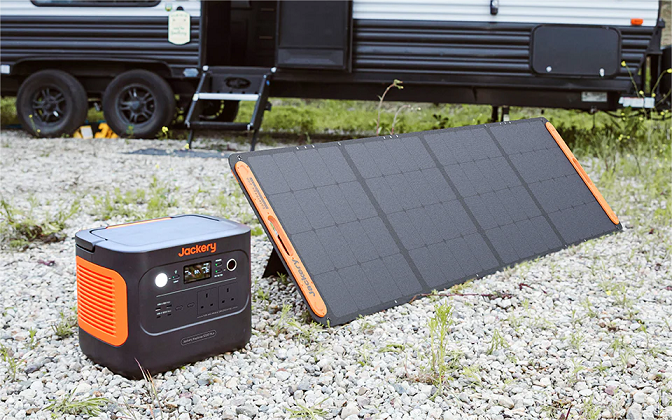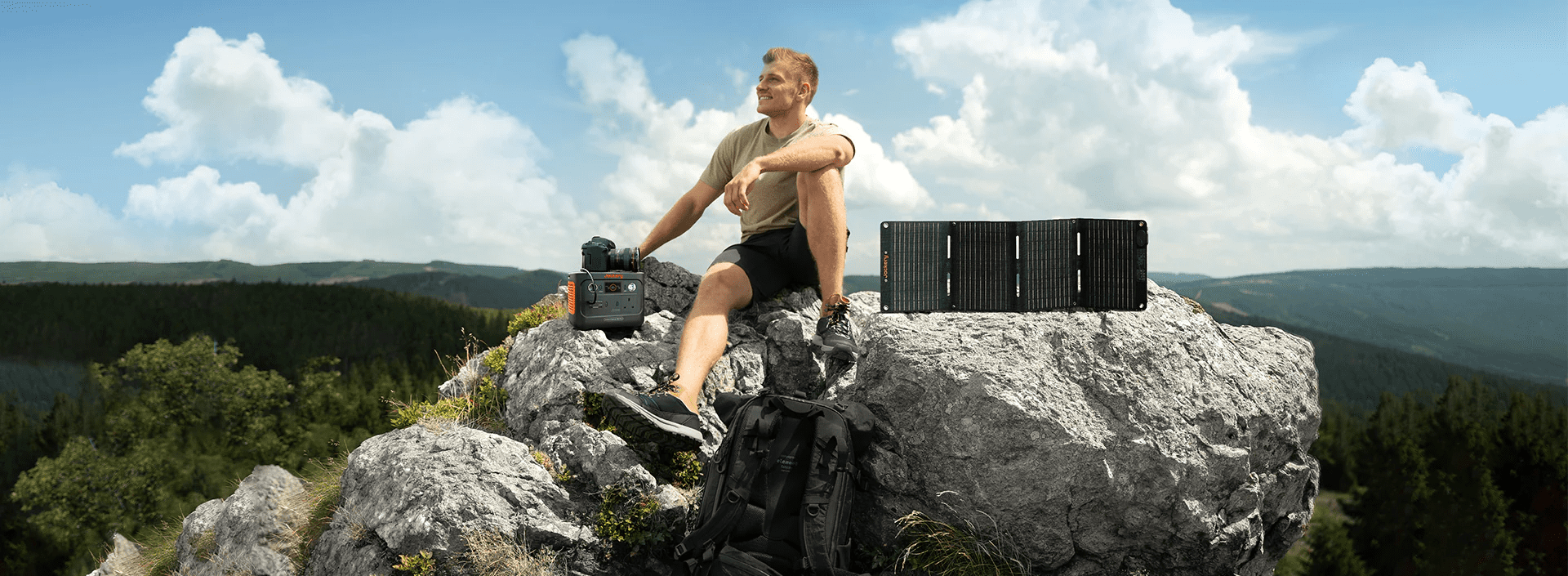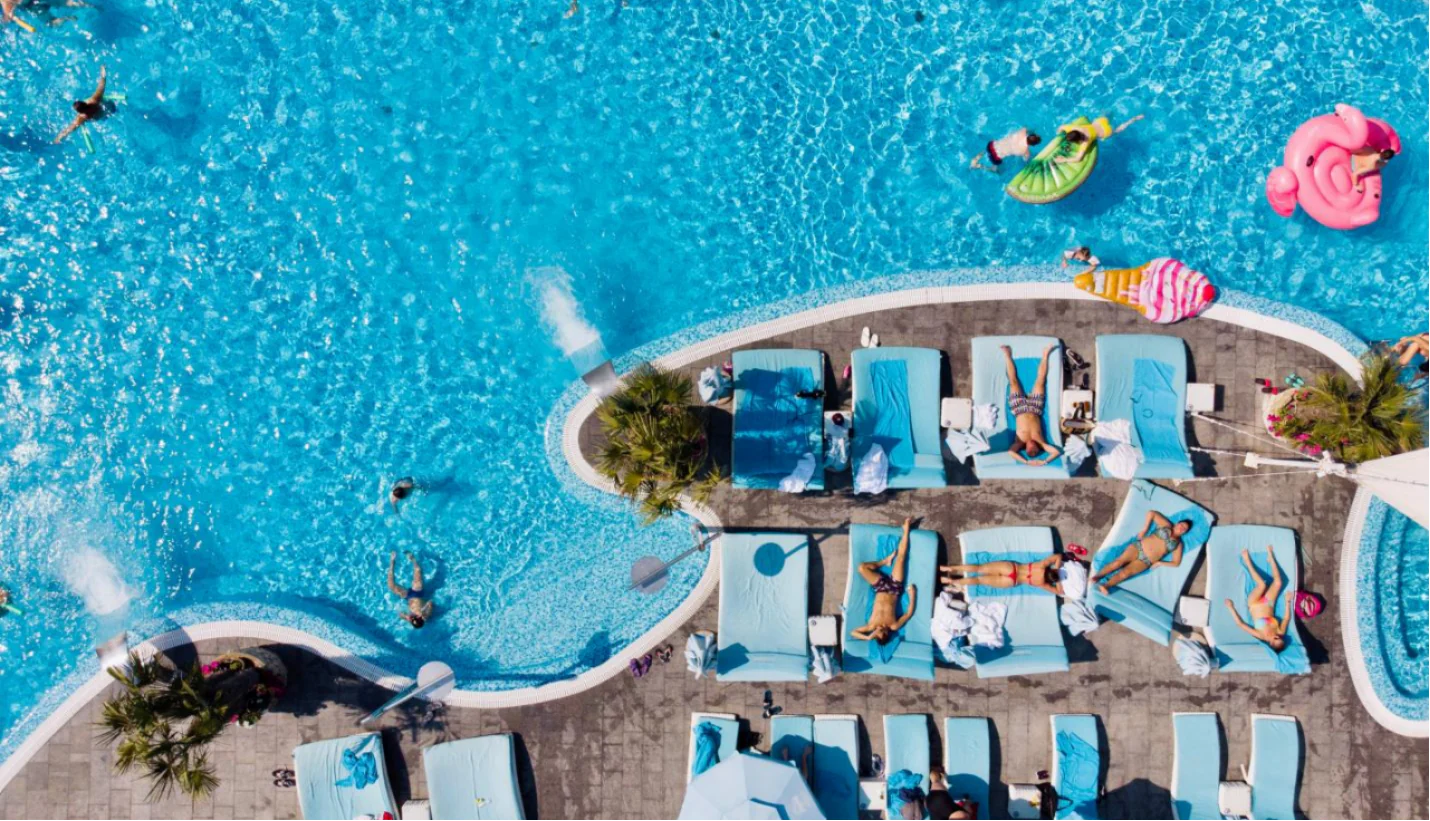When you're ready to embrace the camper van lifestyle, you have several options for buying a camper van. You can buy a ready-made camper van, pay someone to outfit it for you, or try to convert one yourself. Converting an existing vehicle into a camper van is the dream of many adventure seekers, giving you the freedom to hit the open road.
This guide explains everything you need to know about camper van conversions to help you decide if they're the best option. We highly recommend Jackery Portable Power Station, the portable power solution for your camper van, which provides a consistent and stable power supply with lithium-ion and LiFePO4 batteries.
|
Key Takeaways: |
|
- Camper van conversion is legal in the UK but must be done within the framework of laws and regulations. - If you have a limited budget and some hands-on skills, then do-it-yourself conversion is a good choice. - A step-by-step guide to DIY camper van conversion in the UK. - The main safety rules to follow when doing a camper van conversion in the UK. - The cost of a camper van conversion in the UK ranges from £1,000 to £2,000. - Considering the camper van power supply, the Jackery Explorer 1000 Plus and 2000 Plus can power appliances effectively. |
Is Camper Van Conversion Legal in the UK?
Many people hope to realise their outdoor living dreams by modifying their vehicles. But is camper van conversion legal in the UK? Here is a detailed analysis of this issue.
In the UK, converting a van into a camper van is allowed but must meet specific criteria. For example, suppose you intend to have your van recognised by the DVLA as a caravan (home). In that case, you must ensure that the layout and design of the vehicle are similar to those of a caravan (meeting specific internal and external standards) to ensure that it is suitable for habitation.
If you only intend to modify the interior of your caravan, you should follow the DVLA's guidelines on the internal features and ensure that your van is safe and legal.
If you plan to make internal and external changes, consider that you may need to apply to the DVLA to reclassify your van as a caravan.
What is the DVLA?
Generally, the DVLA (Driver and Vehicle Licensing Agency) requires a clear external description to be registered so that the car can be identified and the information passed on to the police or other law enforcement agencies.
Additional Legal Requirements
The following are additional legal requirements for camper van conversions:
MOT and Roadworthiness
After conversion, your camper van will still be subject to an annual Class 4 MOT test, which must pass before being legally driven. All modifications (especially structural changes) will be checked to be safe and meet the required standards set by the DVLA.
Environmental Compliance
You should ensure that your camper van conversion is environmentally friendly, especially if you plan to drive in a low-emission zone. So if your diesel camper meets the Euro 6 emission standard or higher, or your petrol car meets the Euro 4 emission standard or higher, you will not have to pay anything.
In summary, while camper van conversions are legal and allow some flexibility and personalisation, they must pass the necessary inspections and certifications. Before making a conversion, you should consult a professional conversion agency or legal advisor in detail.
Should I Choose DIY or Professionals for Camper Van Conversion?
Many camping enthusiasts struggle to decide whether to do it themselves or hire a professional. The following will analyse two methods to help you make a more suitable choice.
Technical Requirements
Camper van conversion involves multiple professional fields, such as electrical systems, water systems, thermal insulation, etc. If you lack relevant experience and technology, you may encounter various problems and even cause the conversion to fail or leave safety hazards. Professionals will strictly abide by applicable safety standards and specifications during the conversion process to ensure the converted camper is safe and reliable.
Material Selection
Many camper van conversion materials are available, and the quality varies. Due to a lack of experience, novices may buy too much material or choose inappropriate materials, resulting in waste. Professionals are familiar with various materials on the market and can provide customers with high-quality choices and even more favourable prices.
Cost
The cost of finding a professional to convert a camper van is usually higher than doing it yourself. In addition to the cost of materials, you also need to pay labour hours and other expenses, which may burden camping enthusiasts with limited budgets. Doing it yourself can significantly save labour costs.
Degree of Customisation
Although professionals can design according to customer needs, personalisation may be limited to a certain extent. Professionals may be unable to meet some very special needs fully and may have to compromise. Do-it-yourself conversion is not limited to the existing conversion solutions on the market. It can be designed according to your lifestyle and needs to achieve true customisation.
Time and Energy Investment
Every step of camper van conversion must be carefully planned and executed, from design drawings to purchasing materials to actual construction. Do-it-yourself conversion can seriously affect daily life and work while leaving camper van conversion to professionals can save time and energy.
|
|
DIY Conversion |
Conversion by Professionals |
|
Advantages |
• Cost savings • Personalisation • Skill improvement • Create a sense of achievement |
• Save time and energy • Guaranteed material selection • Professional quality assurance • After-sales service |
|
Disadvantages |
• Large investment of time and energy • High technical requirements • Difficult material selection • Lack of quality assurance |
• Higher cost • Limited Personalisation |
Therefore, please analyse the pros and cons and choose a more suitable camper van conversion method. For example, if you have a limited budget and a certain degree of hands-on ability, do-it-yourself conversion is a good choice. However, finding a professional to convert may be more suitable if you want high-quality, professional services and have limited time and energy.
A Step-by-step Guide to Camper Van Conversion
DIY campervan conversions save costs and allow unique features tailored to your needs. Here's a step-by-step guide to DIY campervan conversions in the UK, helping you build your campervan from scratch.

Step 1: Make a Plan
Before picking up the tools, you must make a thorough plan. You usually need to consider the following issues:
• Choose a base vehicle (such as an SUV or van)
• Determine your budget (expect to spend around £3,000 to £10,000)
• Determine the specific features of the conversion (such as storage space, kitchen facilities, power system)
Step 2: Design the Space and Interior
Start by planning a layout that balances sleeping, cooking, and leisure areas and using multifunctional furniture to maximise space.
Step 3: Prepare Tools (Conversion Tool List)
To convert a unique campervan, you must prepare a series of professional tools in addition to creativity and patience. Here is a list of essential tools for converting a campervan:
|
The List of Tools for Camper Van Conversion |
|
|
Electric screwdrivers/drivers Wrenches Pliers Hammer Tape measures and squares Levels Power drills Sandpaper and grinders Power saws Rivet guns Glue guns |
Painting equipment Welding equipment Vacuum pumps Multimeters Wire strippers Pipe cutting tools Goggles Dust mask Gloves Fire extinguisher First aid kit |
|
Drainage tools (such as pipe wrenches) A/C installation tools (such as expanders and vacuum pumps) Solar panel installation tools (such as wiring tools and sealant guns) |
|
The tool list is for reference only; please consult with camper van conversion professionals.
Step 4: Dismantling and Cleaning
According to the conversion plan, remove unnecessary seats and decorative parts in the car. For example, remove the second row of seats to make more space for storage and beds.
After removal, thoroughly clean the car's interior to ensure no debris and dust. In particular, check the floor and ceiling to ensure no damage or leaks.
Step 5: Open Holes
Before opening holes (windows, air conditioners, exhaust fans, etc.), plan in detail which holes you need and where they are located. Please use a measuring tool to accurately mark the location of each hole to ensure that it will not affect the vehicle's structural safety.
Step 6: Lay the Floor
Standard flooring options include solid wood, laminate flooring, PVC flooring, etc. Start laying from one end of the car, making sure that each floor is firmly installed (fixed with floor glue or screws) and the gaps are even. After the floor is laid, seal the edges to prevent moisture from seeping in.
Step 7: Install Electrical Equipment
First, install power equipment, such as solar panels, battery packs, inverters, etc., to meet your power needs. Second, reasonably arrange the locations of sockets and switches.
There are many ways to power your camper, including a generator, the alternator in your car, batteries, solar panels, or even a generator that runs on fuel cells. It can be hard to decide which one to use, but this blog will help you understand how each works.
• Portable generator
• Alternators
• Batteries
• Wind power
• RV hookups or shore power
• Inverter generator
• Solar panels
A portable power station is important for a campervan because it provides a flexible, portable source of electricity to run different appliances and devices when you're not connected to the grid, especially when you can't access a regular power source.
It can also be used as a backup power source or for extra power beyond what the campervan's built-in electrical system can handle. It's also quiet and easy to use anywhere because it's small and can be charged with solar power. We recommend Jackery Portable Power Stations with higher capacities from 99Wh to 12 kWh to satisfy all your power needs.

Step 8: Create a Water System
First, select a water tank of appropriate capacity and install it according to the planned location.
Second, arrange hot and cold water pipes as needed and select appropriate pipe materials and connectors.
Next, water pumps, various valves, and a drainage system must be installed to ensure that wastewater can be discharged smoothly.
Finally, after installing all equipment, test the water system to check for leaks and ensure it functions properly.
Step 9: Modification of Sleeping and Storage Space
First, use the space after removing the seats to build storage space in the camper van. Ensure the storage box has a stable structure that can store things and serve as the basis for the bed.
Second, build a bed frame (made of aluminium or steel) above the storage box. Design the frame structure according to the camper's internal layout and make precise measurements.
Step 10: Insulation
Common insulation materials include polyurethane foam, rock wool, and glass wool. Depending on the selected material, the corresponding construction method is adopted. For example, polyurethane foam can be sprayed. After the insulation construction is completed, all gaps are sealed to prevent heat loss.
Step 11: Cover the Walls
Depending on the chosen material, use the appropriate installation method. For example, wooden boards can be fixed with nails or screws.
Step 12: Test and Adjust
After completing the conversion, conduct a comprehensive test to ensure all functions meet expectations. Adjust and optimise according to the test results.
Make sure that the converted camper complies with UK road traffic regulations. Handle the relevant formalities and documents, such as vehicle inspection and insurance.
Jackery Portable Power Stations for Camper Van
There are many advantages to using portable power stations for your camper van. If you don't want to use the campervan's battery alone, you can use it inside or outside the van to power things like laptops, phones, lights, small kitchen tools, and even a mini-fridge.
When camping in remote places without hookups, a portable power station lets you use your electronics without using a generator, which can be loud and need fuel.
Jackery is the preeminent supplier of solar panels, portable power stations, and solar generators. Jackery Solar Generators comprise Jackery Solar Panels and Portable Power Stations that transform solar energy into electricity. The power station's integrated inverter converts DC into AC, supplying power to indoor and outdoor devices.
Determine the energy requirements for acquiring a solar generator for your off-grid residence. Jackery Portable Power Stations possess capacities varying from 99Wh to 12 kWh, contingent upon the user's specifications. The equation for determining your device's charging duration is as follows:
Working Time = (Power Station Capacity * 0.8) / Operating Wattage of Your Device
Charging a 500W blender using an Explorer 2000 Plus (2042.8Wh capacity) will require 3.5 hours (2042.8Wh*0.8/500W).
Jackery Explorer 1000 Plus
Jackery Explorer 1000 Plus suits your camper van due to its portability, compact size, lightweight, versatility and expandable capacity.
The Explorer 1000 Plus has a powerful 2000W pure sine wave generator and a 1264Wh LiFePO4 battery that lasts a very long time. This means that it has enough power for almost all of your devices. Adding up to three more battery packs makes it possible to increase its power to 5kWh, which is cool.
By adding up to 3 more battery packs, Jackery's unique technology lets you raise the Explorer 1000 Plus's capacity from 1.26kWh to 5kWh. It also has a maximum output of 2000W, which is 20% more than most 1kWh LFP power plants.
The MPPT technology ensures that the solar panels work 99% of the time. With 4* SolarSaga 200W solar panels, it takes 2 hours to charge the battery from 0% to 100% when plugged into a wall. If you can charge your car, you won't have to worry about power blackouts anymore.
With the Jackery APP, you can quickly check on the power station's state from your phone, seeing how much battery life is left, the time, the output/input, and more. Enjoy peaceful charging with the Silent Charging Mode, which keeps noise levels below 30dB while running, giving you complete peace of mind.

(*The working hours are only for reference; the actual working hours depend on your usage.)
Jackery Explorer 2000 Plus
The Jackery Explorer 2000 Plus is more powerful than the Explorer 1000 Plus, and its expandable capacity is from 2 to 12 kWh, which is sufficient to power the basic camper van appliances for a few days or even weeks.
Up to 5 add-on battery packs can simultaneously be connected to a single Jackery Explorer 2000 Plus Power Station, increasing its power from 2 to 12 kWh. This makes it great for camping, heavy-duty work, and home emergencies.
There are multiple ways to recharge an Explorer 2000 Plus, including Jackery Solar Panels, wall sockets, and a carport. For example, you can choose to recharge six pieces of SolarSaga 200W for two hours or an AC adapter for two hours.
The powerful LiFePO4 battery is built to last and can last up to 10 years, even if it is only used once a day. Jackery's cutting-edge fast-charge technology, ChargeShield®, has 62 safety methods, 12 safety algorithms, and four types of physical safety protection. It makes things safer and extends the life of battery packs by 20 to 30 per cent.
In real-time, you can handle the device from afar and see the battery level, power input/output, and available time. The settings can be changed to suit the user.

(*The working hours are only for reference; the actual working hours depend on your usage.)
Safety Rules to Follow When Converting a Camper Van
In the UK, camper van conversions require practicality and comfort and a series of safety rules to ensure the vehicle's safety vehicle's safety when driving on the road and camping. Here are the primary safety rules to follow when doing a camper van conversion in the UK:

Gas Safety Tips
If you install gas accessories (such as stoves and heaters) on your camper van, a qualified gas engineer must install and check them to ensure compliance with gas safety regulations. Improper installation may invalidate your insurance and cause leaks, fires, and carbon monoxide poisoning.
In addition, please check and maintain your gas system regularly to ensure it operates safely.
Electrical Safety Tips
A qualified auto electrician should install all wiring and electrical equipment in the camper van to ensure compliance with safety standards (BS 7671 electrical installation standards) and avoid safety hazards such as short circuits and overloads. Please regularly check and maintain (install circuit breakers and fuses) your electrical system to ensure it is safe and functions properly.
Drinking Water Safety Tips
If you install a water supply system in your camper van (using food-grade hoses and accessories), please ensure it meets UK drinking water standards. Once installed, it is recommended that your system be installed by a certified professional or inspected by a professional.
Separate tanks should be used for fresh water and wastewater to prevent cross-contamination.
Personal Safety Tips
Here are some additional safety rules to follow to ensure your safety:
Fire Safety: First, ensure adequate ventilation in your vehicle, especially when using gas appliances. Then, install appropriate smoke and carbon monoxide alarms.
Second, hazardous materials such as cleaning chemicals, fuels, gases, and batteries should be stored in a secure, ventilated area to prevent leaks and spills. Equipping your camper with a fire extinguisher and blanket is essential to avoid the worst.
Locks and Alarms: Make sure all doors and windows have strong locks, especially sliding windows. Also, please consider installing an alarm system. You may be asked this question when you insure your converted camper.
Regular Inspections: Regularly inspect your camper to ensure all systems and appliances are in good condition. In addition, reasonably distribute the equipment and items in the vehicle to avoid excessive weight concentration, which can affect the car's stability and handling.
How Much Does a Camper Van Conversion Cost in the UK?
The cost of converting a camper van in the UK generally varies depending on its professionalism, the materials chosen, and its complexity.
On average, the cost of a camper van conversion in the UK ranges from £1,000 to £2,000, up to £230,000. (Source: vanlifehub.co.uk) The price of a camper van conversion is directly affected by the equipment added, such as showers, hot water systems, awnings, lithium batteries, alloys, roof racks and bike racks. Below, we will explore the approximate cost range for professional and DIY conversions.
Cost of Professional Conversions
The cost of professionally converting a camper van is usually higher because it includes labour, materials and design fees. Here are some of the main cost items:
• Basic conversion costs (interior decoration, water and electricity system installation, bed and storage space design, etc.)
• Advanced configuration costs (such as solar power system)
• Special design and customisation (such as luxury decorative materials)
Here are some examples of professional conversion costs for camper vans:
|
Professional Converters |
Project Name |
Price |
|
Love Campers |
Mandalay Microcamper |
From £16,999 + VAT |
|
Love Campers |
The Santorini |
£26,995 + VAT |
|
Camper Dreamin' |
Brecon |
From £23,000 + VAT |
|
Racespace Sport Homes |
Luxury Race Van |
From £25,595 + VAT |
|
Born Wild Vans |
Long Wheelbase Conversions |
From £30,000 inc. VAT |
(Data Source: vanlifehub)
Cost of DIY Conversion
The cost of DIY conversion of camper vans is relatively low, but it requires a lot of time, effort, and specific skills and tools. Here are some of the main cost items:
• Vehicle purchase
• Material costs
• Tool costs
• Miscellaneous expenses and unexpected expenses
• Professional consultation or temporary employment of technicians
Here are some examples of DIY conversion costs for camper vans:
|
Models |
Cost |
Time |
|
2019 VW Crafter (cost unknown) |
£900 |
3 weeks |
|
2002 Renault Master (£1,600) |
£5,400 – £6,900 |
Unknown |
|
Peugeot Boxer (£14,000, 4 years old) |
£16,390 |
Unknown |
|
Mercedes Sprinter (£7,000, 15 years old) |
£19,882 |
2 years (evenings and weekends) |
(Data Source: vanlifehub)
Camper Van Conversion FAQs
The following are the frequently asked questions about camper van conversion in the UK.
1. Is it legal to convert a van into a camper?
Converting a van into a camper is legal in the UK, but relevant laws and regulations must be followed. First, the converted camper must meet road traffic safety standards, including the vehicle's structural safety, lighting system, braking system, etc. Second, internal vehicle modifications must not affect driving safety, and the layout and fixation of the seats must be compliant. Before modifying, it is recommended to consult a professional modification company or relevant department to ensure that all modifications meet legal requirements.
2. Is it legal to sleep in a campervan in the UK?
Sleeping in a campervan overnight in the UK is legal, but relevant regulations must be followed.
First, the camper must be parked in a designated camping site or parking lot, and overnight stays on private land require permission from the landowner. Second, the overnight location must not hinder public order and safety, such as parking on busy streets or emergency access.
In addition, some areas may have specific regulations, such as limiting the stay time of campervans or prohibiting overnight stays in certain regions. Therefore, campers should understand the particular rules of the destination before departure to ensure legal compliance.
3. Is it cheaper to convert or buy a campervan?
Converting a van is cheaper if you have the necessary skills and tools. However, it requires time, effort, and potential unforeseen expenses.
Buying a camper outright usually requires a higher initial cost, but it offers convenience and immediate availability. So, please evaluate your personal needs, budget constraints, and willingness to invest time in conversion to make an informed decision.
Final Thoughts
Camper van conversion is becoming increasingly popular in the UK. Whether pursuing a free travel experience or enjoying a personalised living space, camper van conversion can bring unique fun. With the above guide, you can build your camper van, saving costs and giving you a unique camping experience. However, during the camper van conversion process, please pay attention to safety and quality to ensure that the converted camper van is both practical and comfortable.

